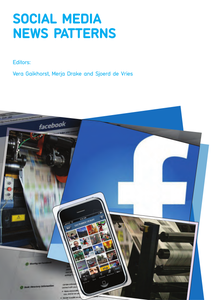Over the last two decades, institutions for higher education such as universities and colleges have rapidly expanded and as a result have experienced profound changes in processes of research and organization. However, the rapid expansion and change has fuelled concerns about issues such as educators' technology professional development. Despite the educational value of emerging technologies in schools, the introduction has not yet enjoyed much success. Effective use of information and communication technologies requires a substantial change in pedagogical practice. Traditional training and learning approaches cannot cope with the rising demand on educators to make use of innovative technologies in their teaching. As a result, educational institutions as well as the public are more and more aware of the need for adequate technology professional development. The focus of this paper is to look at action research as a qualitative research methodology for studying technology professional development in HE in order to improve teaching and learning with ICTs at the tertiary level. The data discussed in this paper have been drawn from a cross institutional setting at Fontys University of Applied Sciences, The Netherlands. The data were collected and analysed according to a qualitative approach.
DOCUMENT

This longitudinal, quantitative study contributes to the debate on technology-based professional development by examining the extent to which a learning (LinkedIn) intervention in a university setting affects an individual’s social media use for professional development, and the extent to which this relates to self-reported employability. In addition, we investigated how this relationship is moderated by an individual’s motivation to communicate through social media (LinkedIn). Based on social capital theory and the conservation of resources theory, we developed a set of hypotheses that were tested based on longitudinal data collected from university employees (N = 101) in middle- and high-level jobs. First, in line with our expectations, social media use for professional development was significantly higher after the learning intervention than before. Second, partially in line with our expectations, social media use for professional development was positively related with the employability dimension anticipation and optimization. Third, contrary to our expectations, motivation to communicate through social media (LinkedIn) did not have a moderating role in this relationship. We concluded that the learning intervention has the potential to foster social media use for professional development, and in turn, can contribute to individuals’ human capital in terms of their employability. Hence, the intervention that forms the core of this empirical research can be a sustainable and promising human resource management (HRM) practice that fits the human capital agenda.
DOCUMENT

Wereldwijd onderzoek: Hoe gebruiken nieuwsmedia social media? Jongeren lezen geen krant meer, ze kijken op hun smartphone die ze altijd bij de hand hebben. Binnen het lectoraat social media en reputatiemanagement van NHL hogeschool te Leeuwarden heeft een groep internationale studenten in 12 landen onderzoek gedaan. Hierbij hebben ze meer dan 150 social media sites bestudeerd van nieuws media. De resultaten maken deel uit van een internationaal onderzoek van NHL Hogeschool en Haaga Helia University. De onderzoeksvraag was: Wat speelt zich af in de nieuwsmedia? Persbureaus kunnen het overzicht gebruiken om hun social media te optimaliseren. En voor ieder die journalistiek een warm hart toedraagt is het interessante informatie over de nieuwsmedia in een overgangssituatie (2nd edition)
DOCUMENT

Connecting Otherwise is an artistic/design research project initiated by The Hmm and the research department of the Gerrit Rietveld Academy and the Sandberg Instituut, alongside a consortium of invited stakeholders from the creative industries and research institutions such as Small File Media Festival, Hackers & Designers, and Stichting LINK. It focuses on the development of interdisciplinary workshop formats exploring regenerative aesthetics and the materiality of digital technologies through hands-on and collective research approaches. Drawing on feminist and decolonial hacking principles and critical making, the project's aim is to make tangible and reimagine digital materiality while resisting extractive tendencies. Promoting regenerative design principles, it addresses the environmental impact of digital technologies and resource depletion, emphasizing art and design’s role in tackling these challenges. We believe the intersectional character of such challenges requires collective and interdisciplinary approaches to design and art making, which are rarely fostered conceptually and practically within the creative industries and educational institutions. The workshops build upon the expertise of the collaborating partners, who bring together art, design, technology, and education and have been instrumental in bridging art and science, supporting artists and designers in contributing to interdisciplinary research environments. Via a series of interconnected workshops the project will engage art and design professionals, educators, and students in material-based research around the social and environmental impact of digital technologies. Participants will explore circuit-making through community craft traditions, embrace ‘slowness’ and ‘lowness’ as frugal and regenerative principles for digital design and art making, and use weaving as a framework for exploring interconnected digital and territorial relationships. The aim is to creatively and critically examine the challenges that (future) art and design practitioners in the creative industries face when building and participating in contemporary digital culture in ways that are both sustainable and equitable.